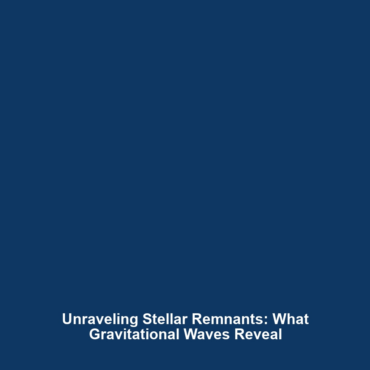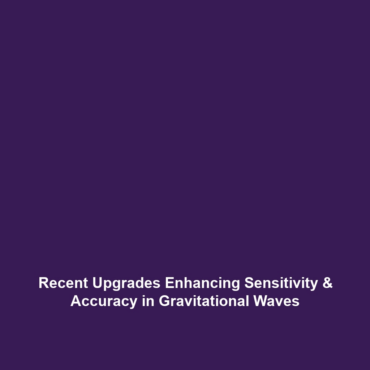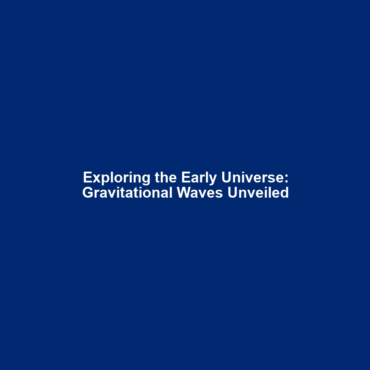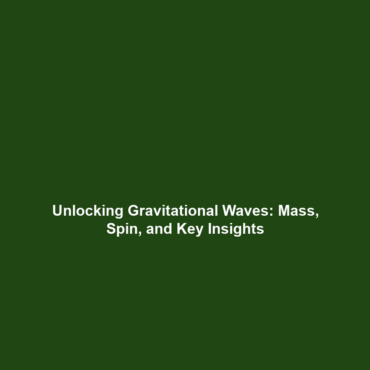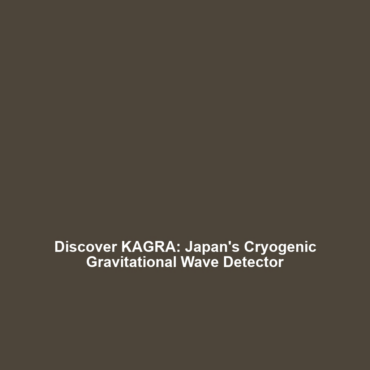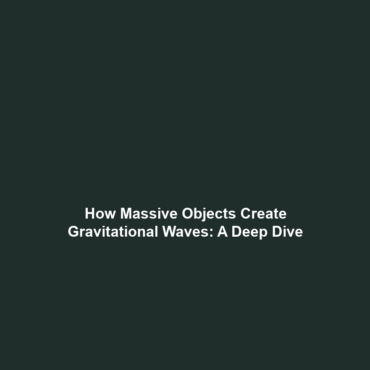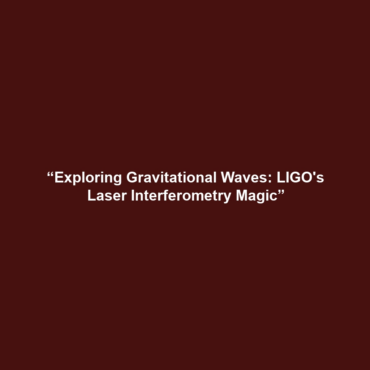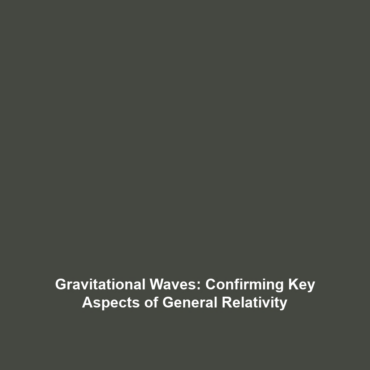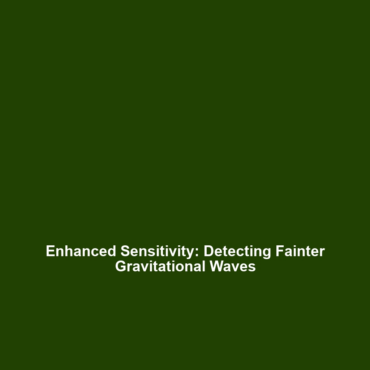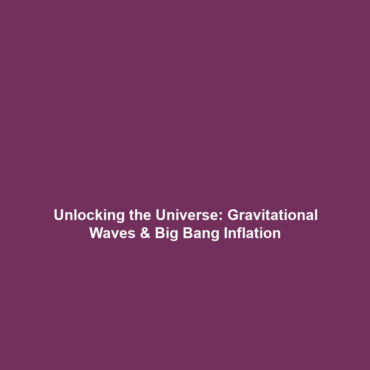Stellar Remnants and Gravitational Waves: Unveiling Cosmic Mysteries
Introduction
Stellar remnants, the remnants left behind after stars undergo explosive deaths, play a pivotal role in understanding the universe. Gravitational waves, ripples in spacetime caused by accelerating masses, have emerged as a revolutionary tool for probing these celestial objects. The interactions between stellar remnants—like black holes and neutron stars—and gravitational waves offer profound insights into their behavior and characteristics. By analyzing these waves, scientists unlock secrets about the life cycles of stars and the fundamental principles of gravitational physics, which are critical to expanding our cosmic knowledge.
Key Concepts
Understanding Stellar Remnants
Stellar remnants include white dwarfs, neutron stars, and black holes, which form as a result of stellar evolution. Each type presents unique characteristics and behaviors that quantum physics and general relativity help explain. The formation of these remnants often leads to significant gravitational events, such as mergers, that produce gravitational waves detectable by observatories like LIGO and Virgo.
Gravitational Waves: A Window into Cosmic Events
Gravitational waves serve as cosmic messengers, enabling scientists to observe and analyze events that are otherwise invisible via traditional electromagnetic means. These waves convey information about the nature of stellar remnants and their interactions, enabling researchers to study phenomena such as:
- Black hole mergers
- Neutron star collisions
- Stellar explosions
Applications and Real-World Uses
The study of gravitational waves has numerous applications in various fields of research, such as:
- How gravitational waves enhance our understanding of stellar remnants: By analyzing gravitational waves, scientists can gather data on the mass, spin, and composition of stellar remnants, refining models of stellar evolution.
- Applications of gravitational waves in astrophysical research: They provide crucial evidence for testing theories of gravity and support the existence of exotic states of matter found in neutron stars.
Current Challenges
Despite the advancements in studying gravitational waves and stellar remnants, several challenges remain:
- Detectability: Gravitational waves from certain events are weak and can be difficult to detect, requiring advanced and sensitive instrumentation.
- Data interpretation: Analyzing the data collected from gravitational wave events is complex and necessitates sophisticated algorithms and computational resources.
- Limited multi-messenger astronomy: Integrating gravitational wave data with electromagnetic observations is still a developing field, facing challenges in coordination and data sharing.
Future Research and Innovations
The future of research on stellar remnants and gravitational waves is promising, with several anticipated innovations:
- Advanced gravitational wave detectors: Upcoming projects like the Einstein Telescope will offer enhanced sensitivity, allowing for the detection of fainter signals from distant cosmic events.
- Multi-messenger astronomy advancements: Improved technology for combining gravitational signals with electromagnetic observations promises to provide a more comprehensive understanding of stellar events.
- Quantum computing applications: Utilizing quantum computing could significantly enhance data analysis capabilities in gravitational wave research.
Conclusion
In conclusion, the exploration of stellar remnants through the lens of gravitational waves holds immense significance in the field of astrophysics. By studying these remnants, we can further our understanding of the universe’s fundamental processes. As research progresses, the continuous development of technology and methodologies will unveil more secrets of the cosmos. For further reading, consider exploring articles related to black holes and neutron stars to deepen your understanding of these fascinating subjects.
